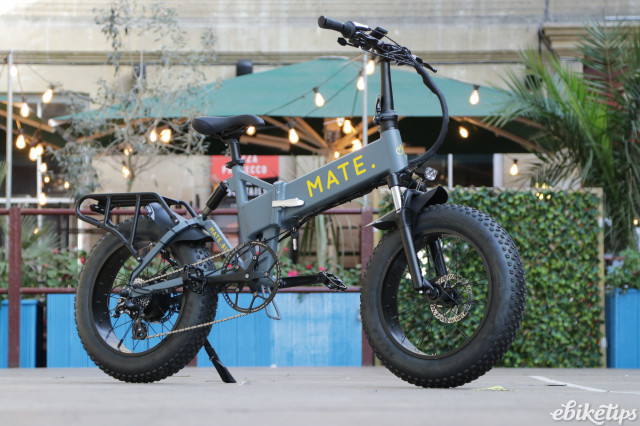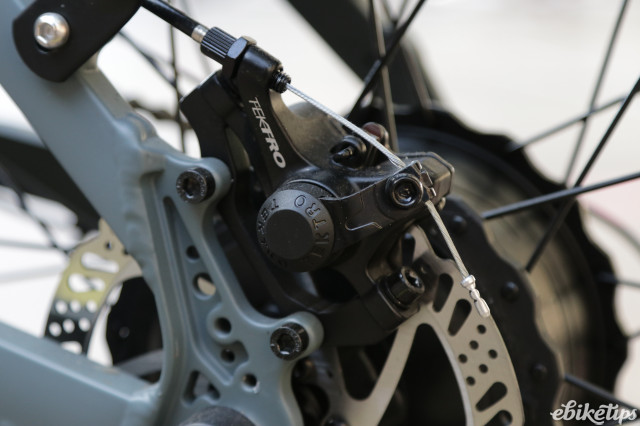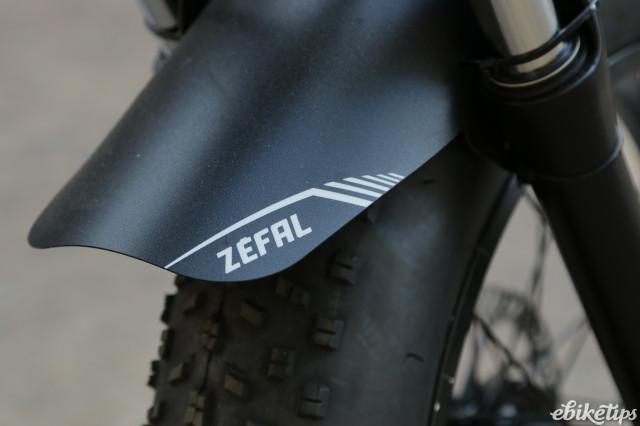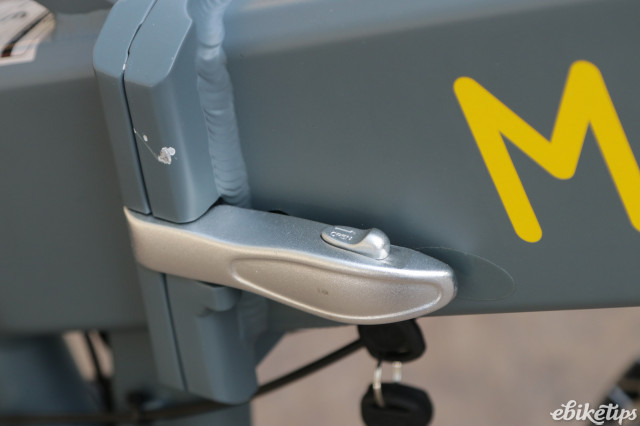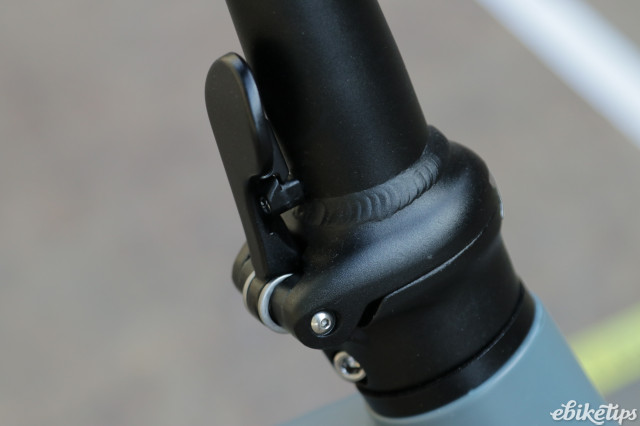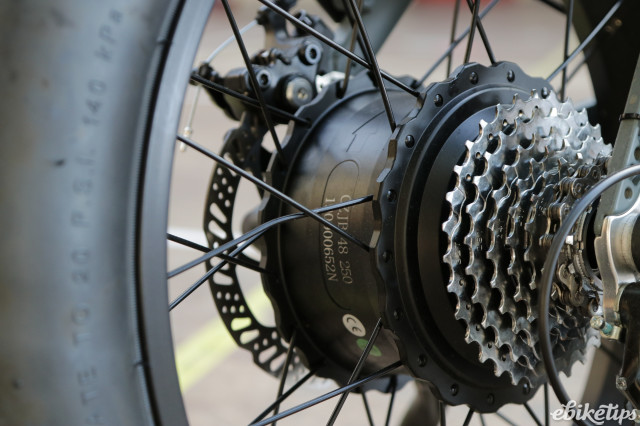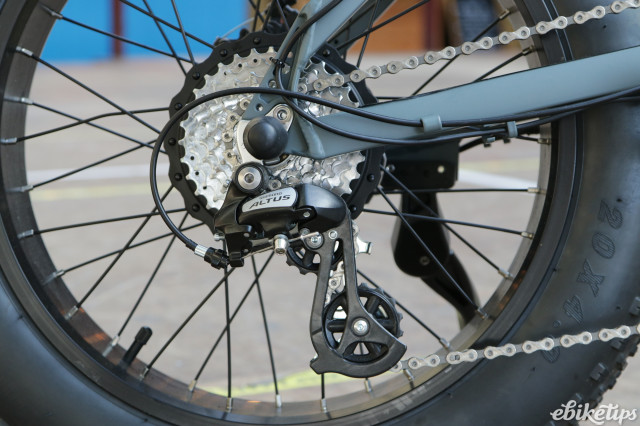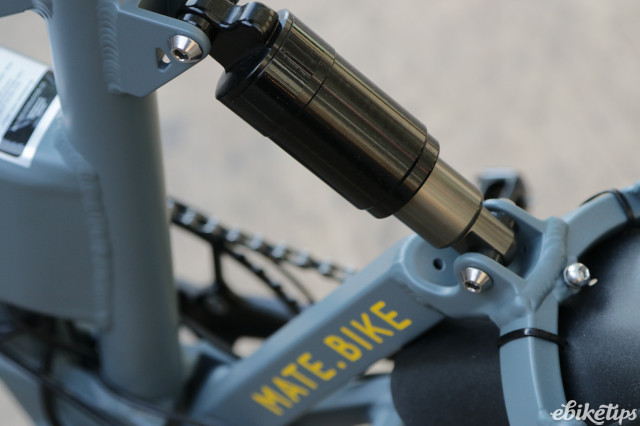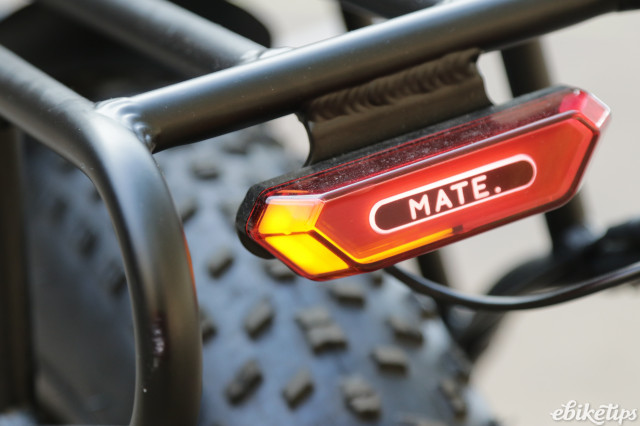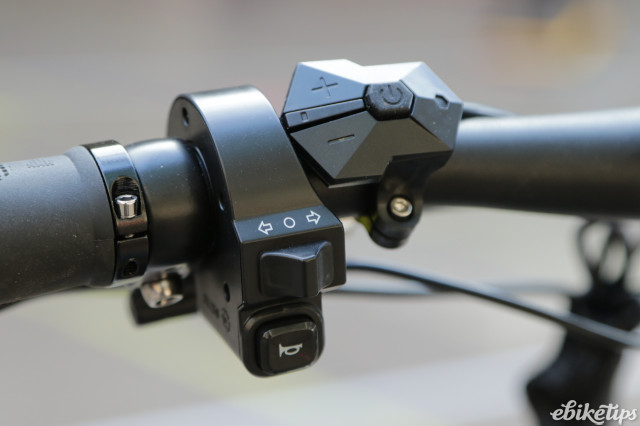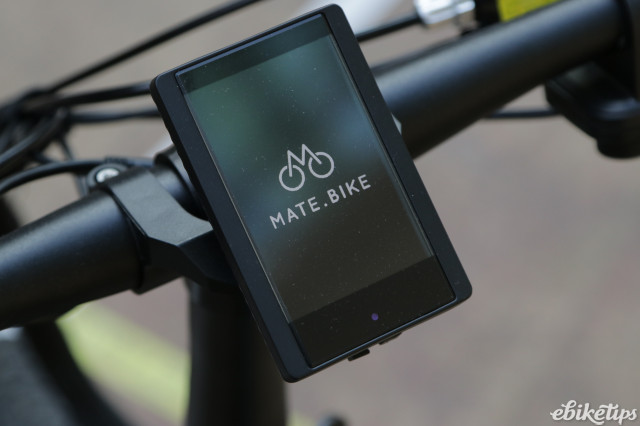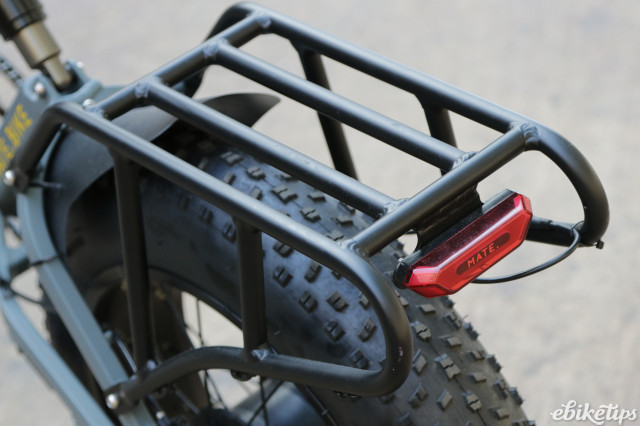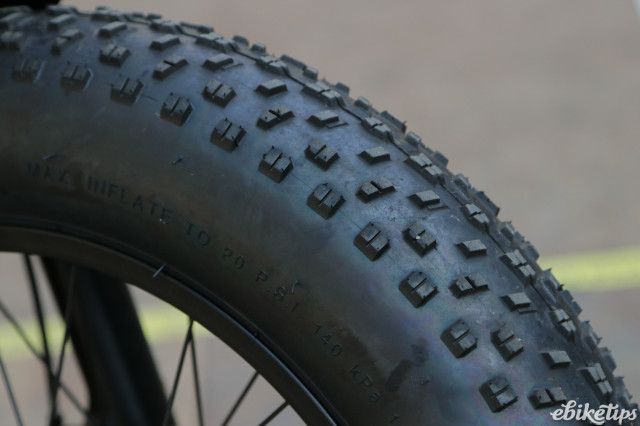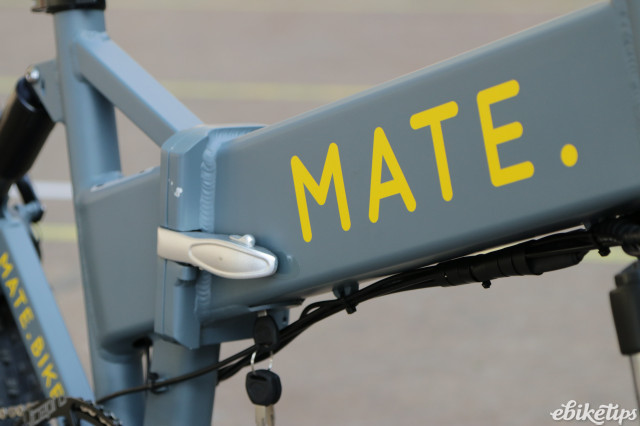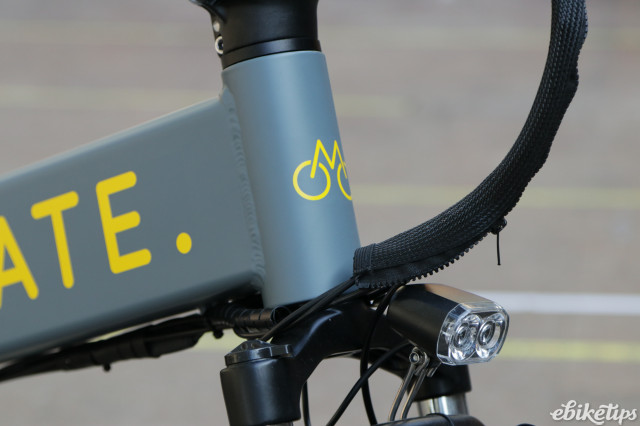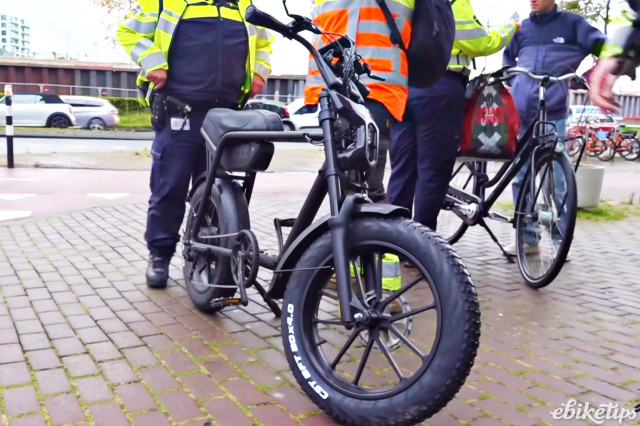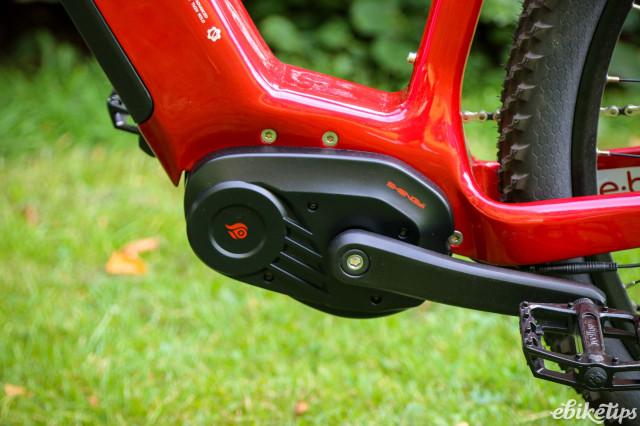Review: MATE X
Overview
- Funky looks
- Reasonably capable motor
- Fairly capable on and off road
- Extremely heavy
- Suspension is poor
- Ok at everything but not great at anything
The MATE X was a crowdfunding sensation when it hit Indiegogo in 2018, grossing over £12m and becoming the biggest ever bike crowdfunder in the process. Now we’ve had a review bike to try and it’s quite a fun machine. However, while hitting all the niches at once makes for a compelling story, it doesn’t necessarily make for the most practical bike for day-to-day use.
What we have here is a small-wheeled, full-suspension, folding electric fat bike. If you’re in the market for precisely that mix then you can stop reading now, because I don’t think you’ll find it anywhere else. The Rad Power Bikes RadMini is probably the closest direct competitor at €1,599, though it's less aimed at off-road riding. The MATE X is available in various configurations; the bike in the images is a non-road-legal 750W version with a throttle and a 17Ah battery, but most of the testing was done aboard a 250W, 14Ah bike with a retail price of £1,999.
For that money you get a folding, full suspension alloy frame, a Shimano 8-speed transmission, mechanical disc brakes (hydraulics are available for an extra £100) and beefy 20” wheels with huge 4” tyres. Integrated lighting and a rear rack as shown on the bike in the photos are cost options; the lighting also includes indicators, accessible from a switch on the bars, which you may or may not think is a worthwhile addition. You can buy a MATE on the major Cycle-to-work schemes and there’s also an option to pay in instalments over twelve months.
The bike will accommodate a wide range of rider sizes thanks to the long seatpost; normally at 1.89m I’m at the top of the range for a one-size bike but the MATE would easily accommodate taller riders than me. The bar height is adjustable too through a telescopic steerer. Dropped right down the bike might be a bit on the long side for smaller riders but they’d be able to ride it just fine.
Once you’ve got the bike set up, it’s easy enough to understand and ride. There’s a colour LCD display in the centre that shows the mode you’re in (1 to 5 on the 250W bike with levels up to 10 unlocked on the 750W bike) and how much the motor is doing. For a motor that purports to be a 250W unit that number spends a lot of its time well north of 500W, especially when climbing. Having said that, although it’s at the more powerful end of the hub motors I’ve tried it’s not as torquey as a good mid motor. The MATE X was plenty happy dragging itself up my test climb (1.5km at 5% average, with a 12% section); although I needed all of the 8 gears to stay comfortable, it certainly wasn’t a chore.
Five assistance modes is, as ever, too many: this is not a bike you’ll want to be riding with the motor turned off, or down. For a start it’s incredibly heavy: both of the bikes we tried were over 30kg. That’s not really an issue when riding under power most of the time as the motor is plenty powerful enough to compensate. The only problem is from a standstill, when the motor takes a second or two to kick in. You need to make sure you’re in a low gear when you stop as muscling the MATE X away from the lights in top gear without the motor helping isn’t much fun; the cadence sensor is about average in terms of how long it delays the power kicking in,taking a second or two to add assistance. The huge tyres also add masses of drag, especially when you have them nice and soft to soak up road bumps or cope better off-road. I only ever used the bike in the two highest assistance modes, even on the flat.
The range from the internal 14Ah (504Wh) battery is pretty good. It’s not as good as a lighter bike with a torque-sensing motor and less extreme tyres, but I was getting three reps of my commute out of the MATE X when the best performing bikes with a similar battery capacity can manage five. On the flat MATE reckons that 120km is the maximum range possible, presumably from the bigger 17Ah (612Wh) battery. Given that it’s only really fun to ride in the highest two of the five assistance modes you’re unlikely to get that kind of range, but I’d expect the Model I tested to easily last for 50-60km on flatter terrain, which is decent enough. It’s a pretty comfy bike for a longer ride; the saddle and grips are decent enough and the big tyres and suspension certainly help.
The MATE X is sold as a bike that can head out over rough ground, and indeed it can. Those huge tyres can be run at stupidly low pressures without any fear of grounding the rims and puncturing, so you can ride the MATE on sand, or snow (presumably, we didn’t get any snow) without any problems. It’s not a bike that’s really designed for more technical terrain in terms of its geometry and wheels size but it’ll cope with a decent range of stuff. The tyres are doing most of the heavy lifting here: the bike is a full-suspension design but in common with most e-bikes at this kind of price point and below the suspension components aren’t great.
Because of the small wheels the fork is a lot shorter than usual and as such isn’t as flexy back-to-front when you’re riding, but the damping is dreadful and it tops out over every pothole and speed bump with a clunk. It has a lockout and I mostly used it locked, letting the front tyre take care of damping duties. The rear shock isn’t as noticeably bad, and the frame pivot is beefy enough that the bike behaves well enough when it’s being pushed into a corner.
Let’s touch upon the folding aspect of the bike: you can fold the MATE X thanks to a frame hinge and a hinge in the steerer tube, and it’s a fairly traditional fold that reduces the bikes’ footprint quite a bit. Given the size of the tyres it’s never going to be that compact, but it’s a functional fold. The bike sits on a metal foot under the bottom bracket, and you can wheel it around behind you.
Exactly how useful the folding is going to be is up for debate. If you have a mixed commute with level access, and your train only accepts folding bikes, then you can reasonably claim that the MATE is one. Where it gets tricky is when you have to do anything other than roll the bike along the flat. It’s simply too heavy and too bulky when folded to be manageable, and I say that as a big chap that’s fully physically able. Something like the Tern Vektron is, at 23kg, on the very limit of what I’d consider to be a usable folding bike, and indeed even on that bike I’d consider the fold to be of much less importance than some of its other features. Here it’s superfluous for a lot of use cases. There’s no way I’d recommend this bike if your usage is going to revolve around carrying it, or lifting it into a vehicle.
So, who would I recommend it to? Well, it’s a fun bike to knock around on, and there’s no doubt that there’s demand for a bike like this: after all, over 31,000 people backed it on Indiegogo and I got asked about it much more than usual when out and about. But I wouldn’t say that a successful crowdfunding campaign necessarily means that a product is good, more that it manages to capture the zeitgeist.
I’m not saying the MATE X isn’t good: it’s decent enough. It rides well, and it has a pretty capable motor system; the specific faults with the bike - the weight and the suspension performance - are reasonably common complaints. It’s less that, and more that I’d struggle to think of a use case where another more focused bike design isn’t better. If you want a big bike with fat tyres for mucking about in the woods then for the same money you can get Decathlon’s Rockrider e-ST900 with the excellent Brose mid motor. If you want a city bike then there are quite a few Bosch-powered options for less than £2,000 that are much more practical, and if you want a folding bike then realistically you’ll need to handle it when folded, and more or less any electric folding bike is going to be a better bet than this. If you have to have all of those things in one bike then the MATE X gives a good account of itself, but I think that realistically most people will be better served by something more specific, that’s more designed for the main type of riding that they do.
